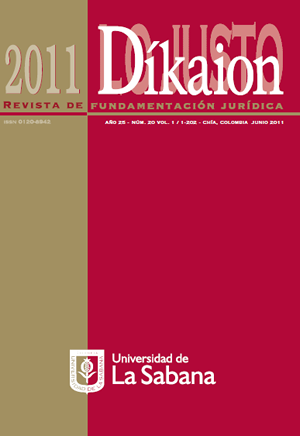Physis against nomos: he everlasting return
Keywords:
Physis, nomos, dike, Díkaion, nature, law, justice, Law, sophistic, illustration, tragedy, philosophy, divine law, natural law, human law.Abstract
Few times has there been an inquiry about the origin and cause of the opposition between physis and nomos. The so called Greek Illustration, on the fifth century A.C, emerges as an initial explanation of the development that the hermeneutics of these concepts has followed. It is relevant to speak about the etymology of both Greek terms, as the changes and widening provoked by linguistic use are the starting point for philosophical reflection. This reflection can be generated in different spheres, being particularly illustrative the ones of tragedy, politics and philosophy in its confrontation with sophistic, if we place ourselves in the fifth century. There, in the political discussion, in the philosophical reflection and in tragic theatre, can the ultimate meaning that the Greeks gave to physis and nomos be appreciated with more realism.
Downloads
How to Cite
Issue
Section
License
1. Proposed Policy for Journals That Offer Open Access
Authors who publish with this journal agree to the following terms:
This journal and its papers are published with the Creative Commons License Attribution-NonCommercial-NoDerivatives 4.0 International (CC BY-NC-ND 4.0). You are free to share copy and redistribute the material in any medium or format if you: give appropriate credit, provide a link to the license, and indicate if changes were made; don’t use our material for commercial purposes; don’t remix, transform, or build upon the material.






